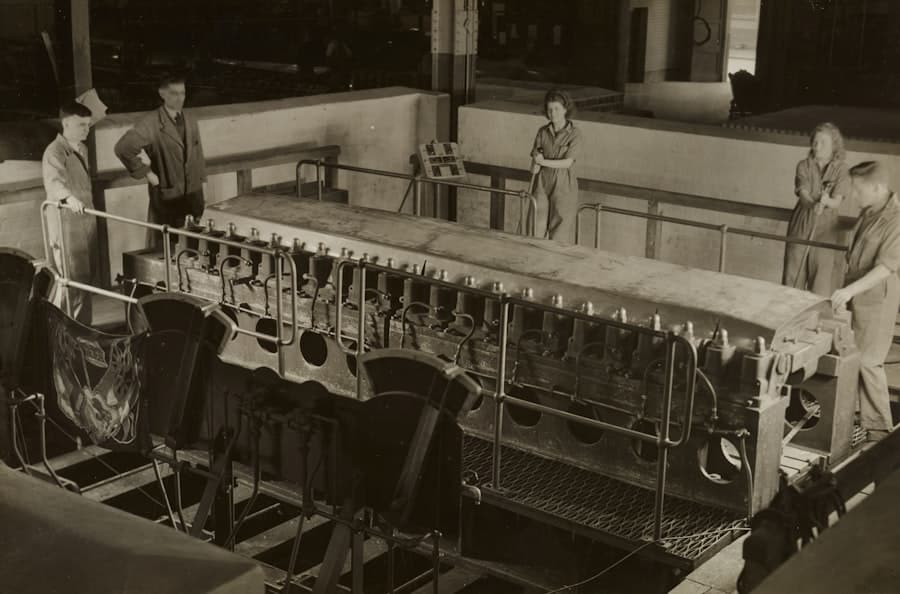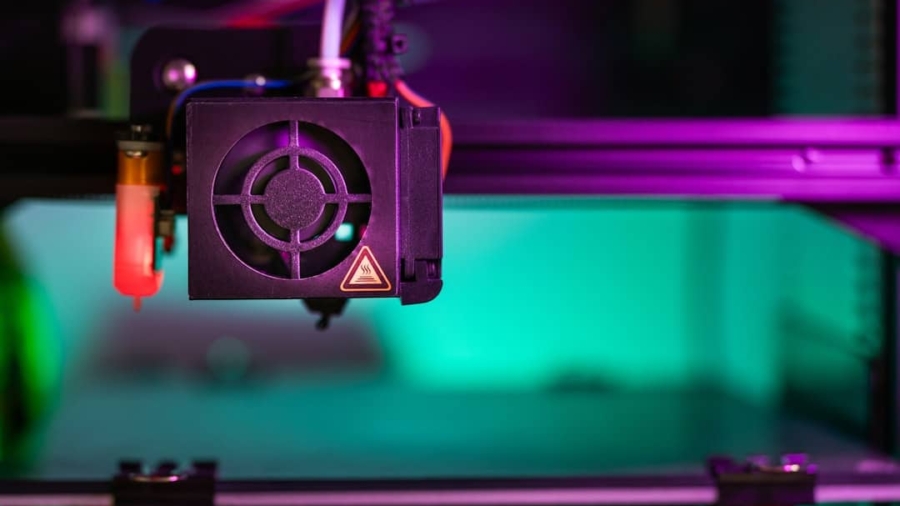The concept of net-zero factories has gained significant traction in recent years, driven by the urgent need to combat climate change and reduce greenhouse gas emissions. As industries are among the largest contributors to carbon emissions, the shift towards net-zero manufacturing is not merely a trend but a necessity. Companies are increasingly recognizing that their operational practices must evolve to align with global sustainability goals.
This transformation is not only about compliance with regulations but also about meeting the growing expectations of consumers who are more environmentally conscious than ever before. The rise of net-zero factories is characterized by a holistic approach to manufacturing that integrates sustainable practices across all levels of production. This includes the use of renewable energy sources, waste reduction strategies, and the implementation of circular economy principles.
For instance, companies like Unilever and Siemens have committed to achieving net-zero emissions in their manufacturing processes by investing in energy-efficient technologies and sustainable materials. These initiatives reflect a broader industry shift towards sustainability, where businesses are not only focused on profitability but also on their environmental footprint.
Key Takeaways
- Net-zero factories are on the rise as companies strive to reduce their carbon footprint and environmental impact.
- Intelligent automation plays a crucial role in helping factories achieve net-zero by optimizing energy usage and reducing waste.
- Implementing intelligent automation in factories brings advantages such as increased efficiency, cost savings, and improved sustainability.
- Challenges in achieving net-zero through intelligent automation include high initial investment costs and the need for skilled workforce.
- Innovations in technology, such as AI and IoT, are driving the development of net-zero factories and making sustainable practices more accessible.
The Role of Intelligent Automation in Achieving Net-Zero
Intelligent automation plays a pivotal role in the journey towards net-zero factories by enhancing efficiency and reducing waste. By leveraging advanced technologies such as artificial intelligence (AI), machine learning, and robotics, manufacturers can optimize their processes to minimize energy consumption and emissions. For example, AI algorithms can analyze production data in real-time to identify inefficiencies and suggest improvements, leading to more sustainable operations.
This level of automation allows for precise control over manufacturing processes, ensuring that resources are used judiciously. Moreover, intelligent automation facilitates the integration of renewable energy sources into manufacturing operations. Smart grids and automated energy management systems can dynamically adjust energy usage based on availability and demand, allowing factories to rely more on solar or wind power.
This not only reduces reliance on fossil fuels but also stabilizes energy costs over time. Companies like Tesla have demonstrated how intelligent automation can be harnessed to create energy-efficient production lines that contribute to their overall sustainability goals.
Advantages of Implementing Intelligent Automation in Factories

The implementation of intelligent automation in factories offers numerous advantages that extend beyond mere operational efficiency. One of the most significant benefits is the reduction of operational costs. By automating repetitive tasks and optimizing resource allocation, companies can lower labor costs and minimize waste.
For instance, a study by McKinsey & Company found that manufacturers could reduce operational costs by up to 30% through the adoption of automation technologies. This financial incentive is a compelling reason for companies to invest in intelligent automation as they strive for net-zero emissions. In addition to cost savings, intelligent automation enhances product quality and consistency.
This is particularly important in industries such as pharmaceuticals and electronics, where product quality is paramount. Furthermore, intelligent automation enables real-time monitoring and data collection, allowing manufacturers to quickly identify and rectify issues before they escalate into larger problems.
This proactive approach not only improves product quality but also contributes to sustainability by reducing scrap and rework.
Challenges and Obstacles in Achieving Net-Zero through Intelligent Automation
Despite the clear advantages of intelligent automation, several challenges hinder the widespread adoption of these technologies in the quest for net-zero factories. One significant obstacle is the initial investment required for implementing advanced automation systems. Many manufacturers, particularly small and medium-sized enterprises (SMEs), may find it difficult to allocate the necessary capital for such investments.
The upfront costs associated with purchasing new equipment, integrating software solutions, and training personnel can be daunting, leading some companies to delay or forgo automation altogether. Another challenge lies in the complexity of integrating intelligent automation into existing manufacturing processes. Many factories operate on legacy systems that may not be compatible with modern automation technologies.
This can create significant hurdles in terms of data interoperability and system integration. Additionally, there is often resistance to change from employees who may fear job displacement or lack the necessary skills to operate new technologies. Overcoming these cultural and technical barriers requires a comprehensive change management strategy that emphasizes training and upskilling the workforce while fostering a culture of innovation.
Innovations in Technology for Net-Zero Factories
The landscape of technology is rapidly evolving, with numerous innovations emerging that support the development of net-zero factories. One notable advancement is the rise of digital twins—virtual replicas of physical systems that allow manufacturers to simulate and optimize their operations in real-time. By using digital twins, companies can experiment with different scenarios without disrupting actual production, enabling them to identify the most efficient processes and resource allocations.
Another promising innovation is the use of blockchain technology for supply chain transparency. By providing an immutable record of transactions, blockchain can help manufacturers track the carbon footprint of their products throughout the supply chain. This level of transparency not only enhances accountability but also allows companies to make informed decisions about sourcing materials and optimizing logistics for reduced emissions.
For example, companies like IBM are leveraging blockchain to create more sustainable supply chains by ensuring that raw materials are sourced responsibly and sustainably.
The Impact of Net-Zero Factories on the Environment and Society

The establishment of net-zero factories has far-reaching implications for both the environment and society at large. Environmentally, these factories contribute significantly to reducing carbon emissions, which is crucial in mitigating climate change impacts. By adopting sustainable practices such as energy efficiency measures and waste reduction strategies, net-zero factories can help preserve natural resources and protect ecosystems from degradation caused by industrial activities.
Socially, net-zero factories can lead to job creation in green technologies and sustainable practices. As industries transition towards more sustainable operations, there will be an increased demand for skilled workers who can operate advanced automation systems and implement eco-friendly practices. This shift not only supports economic growth but also fosters a sense of community responsibility as companies engage with local stakeholders to promote sustainability initiatives.
Furthermore, consumers are increasingly drawn to brands that prioritize environmental stewardship, creating a positive feedback loop where sustainable practices enhance brand loyalty and market competitiveness.
The Future of Net-Zero Factories: Opportunities and Potential
Looking ahead, the future of net-zero factories is filled with opportunities for innovation and growth. As technology continues to advance, manufacturers will have access to even more sophisticated tools that enable them to achieve their sustainability goals more effectively. The integration of AI-driven analytics will allow for deeper insights into production processes, leading to continuous improvement in efficiency and sustainability.
Moreover, as global regulations around emissions tighten, companies that proactively adopt net-zero practices will be better positioned to comply with these requirements while gaining a competitive edge in the marketplace. The potential for collaboration between industries also presents exciting opportunities; cross-sector partnerships can lead to shared knowledge and resources that accelerate the transition towards net-zero manufacturing across various sectors.
Steps for Companies to Transition to Net-Zero Factories through Intelligent Automation
Transitioning to net-zero factories through intelligent automation requires a strategic approach that encompasses several key steps. First, companies should conduct a comprehensive assessment of their current operations to identify areas where emissions can be reduced through automation technologies. This assessment should include an analysis of energy consumption patterns, waste generation, and resource utilization.
Next, organizations must develop a clear roadmap outlining their sustainability goals and the role that intelligent automation will play in achieving them. This roadmap should include specific targets for emissions reduction, timelines for implementation, and metrics for measuring progress. Engaging stakeholders across all levels of the organization is crucial during this phase to ensure buy-in and support for the transition.
Investing in employee training and development is another critical step in this process. As new technologies are introduced, workers must be equipped with the skills necessary to operate them effectively. Companies should prioritize upskilling initiatives that empower employees to embrace automation as a tool for enhancing their work rather than viewing it as a threat.
Finally, fostering a culture of innovation within the organization will be essential for sustaining momentum towards net-zero goals. Encouraging employees to contribute ideas for improving sustainability practices can lead to creative solutions that drive further efficiencies and reduce emissions over time. By taking these steps, companies can successfully navigate the transition towards net-zero factories while harnessing the power of intelligent automation.
If you are interested in exploring the latest technology trends, you may also want to check out this article on the best tablet for drawing. This article discusses the top tablets available for artists and designers looking to enhance their creative process.
Just as intelligent automation is revolutionizing factories, cutting-edge tablets are transforming the way artists bring their visions to life.
FAQs
What is a net-zero factory?
A net-zero factory is a manufacturing facility that aims to balance the amount of carbon emissions it produces with an equivalent amount of carbon removal or offsetting, resulting in a net-zero carbon footprint.
What is intelligent automation in the context of factories?
Intelligent automation in factories refers to the use of advanced technologies such as artificial intelligence, machine learning, robotics, and Internet of Things (IoT) to optimize and streamline manufacturing processes, leading to increased efficiency and reduced environmental impact.
How can intelligent automation help factories achieve net-zero emissions?
Intelligent automation can help factories achieve net-zero emissions by optimizing energy usage, reducing waste, and improving overall operational efficiency. This can be achieved through predictive maintenance, energy management systems, and real-time monitoring and control of production processes.
What are the benefits of transitioning to net-zero factories through intelligent automation?
The benefits of transitioning to net-zero factories through intelligent automation include reduced environmental impact, lower operational costs, improved resource efficiency, and enhanced competitiveness in the market. Additionally, it can also lead to a more sustainable and resilient manufacturing sector.
What are some challenges in implementing intelligent automation for net-zero factories?
Challenges in implementing intelligent automation for net-zero factories include high initial investment costs, the need for skilled workforce to operate and maintain advanced technologies, and potential resistance to change from traditional manufacturing practices. Additionally, ensuring cybersecurity and data privacy in interconnected systems is also a concern.

